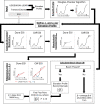Characterizing storm-induced coastal change hazards along the United States West Coast
- PMID: 35606384
- PMCID: PMC9126972
- DOI: 10.1038/s41597-022-01313-6
Characterizing storm-induced coastal change hazards along the United States West Coast
Abstract
Traditional methods to assess the probability of storm-induced erosion and flooding from extreme water levels have limited use along the U.S. West Coast where swell dominates erosion and storm surge is limited. This effort presents methodology to assess the probability of erosion and flooding for the U.S. West Coast from extreme total water levels (TWLs), but the approach is applicable to coastal settings worldwide. TWLs were derived from 61 years of wave and water level data at shore-perpendicular transects every 100-m along open coast shorelines. At each location, wave data from the Global Ocean Waves model were downscaled to the nearshore and used to empirically calculate wave run-up. Tides were simulated using the Oregon State University's tidal data inversion model and non-tidal residuals were calculated from sea-surface temperature and pressure anomalies. Wave run-up was combined with still water levels to generate hourly TWL estimates and extreme TWLs for multiple return periods. Extremes were compared to onshore morphology to determine erosion hazards and define the probability of collision, overwash, and inundation.
© 2022. The Author(s).
Conflict of interest statement
The authors declare no competing interests.
Figures







References
-
- Stockdon, H. F. et al. National assessment of hurricane-induced coastal erosion hazards—Gulf of Mexico. U.S. Geological Survey Open-File Report 2012–1084 (2012).
-
- Stockdon, H. F., Doran, K. J., Thompson, D. M., Sopkin, K. L., & Plant, N. G. National assessment of hurricane-induced coastal erosion hazards: Southeast Atlantic Coast. U.S. Geological Survey Open-File Report 2013–1130 (2013).
-
- George DA, Largier JL, Storlazzi CD, Barnard PL. Classification of rocky headlands in California with relevance to littoral cell boundary delineation. Mar. Geol. 2015;369:137–152. doi: 10.1016/j.margeo.2015.08.010. - DOI
-
- Ruggiero, P., Hacker, S, Seabloom, E, & Zarnetske, P. The Role of Vegetation in Determining Dune Morphology, Exposure to Sea-Level Rise, and Storm-Induced Coastal Hazards: A U.S. Pacific Northwest Perspective. In Moore L., Murray A. (eds) Barrier Dynamics and Response to Changing Climate. (Springer, 2018).
LinkOut - more resources
Full Text Sources

